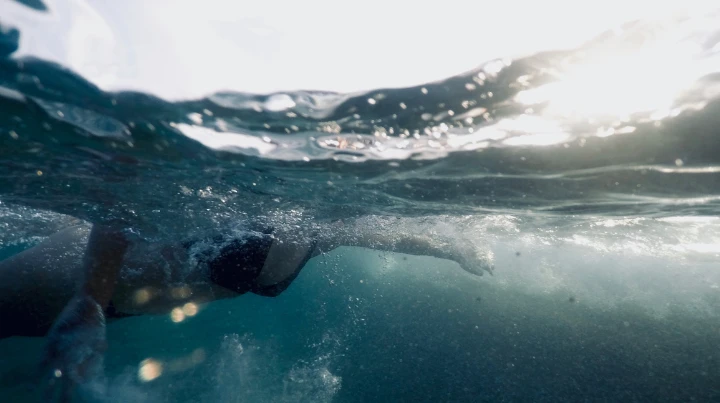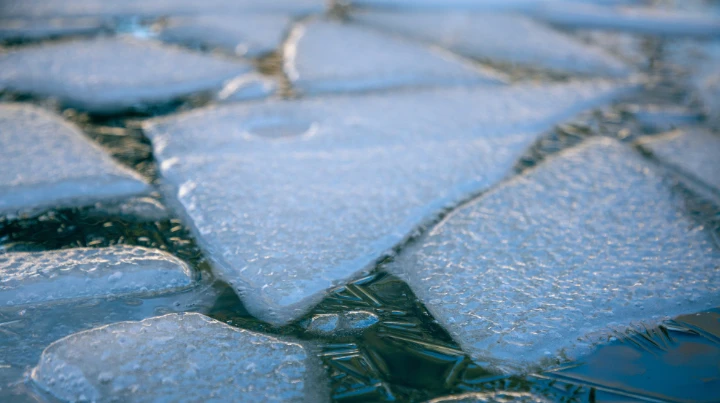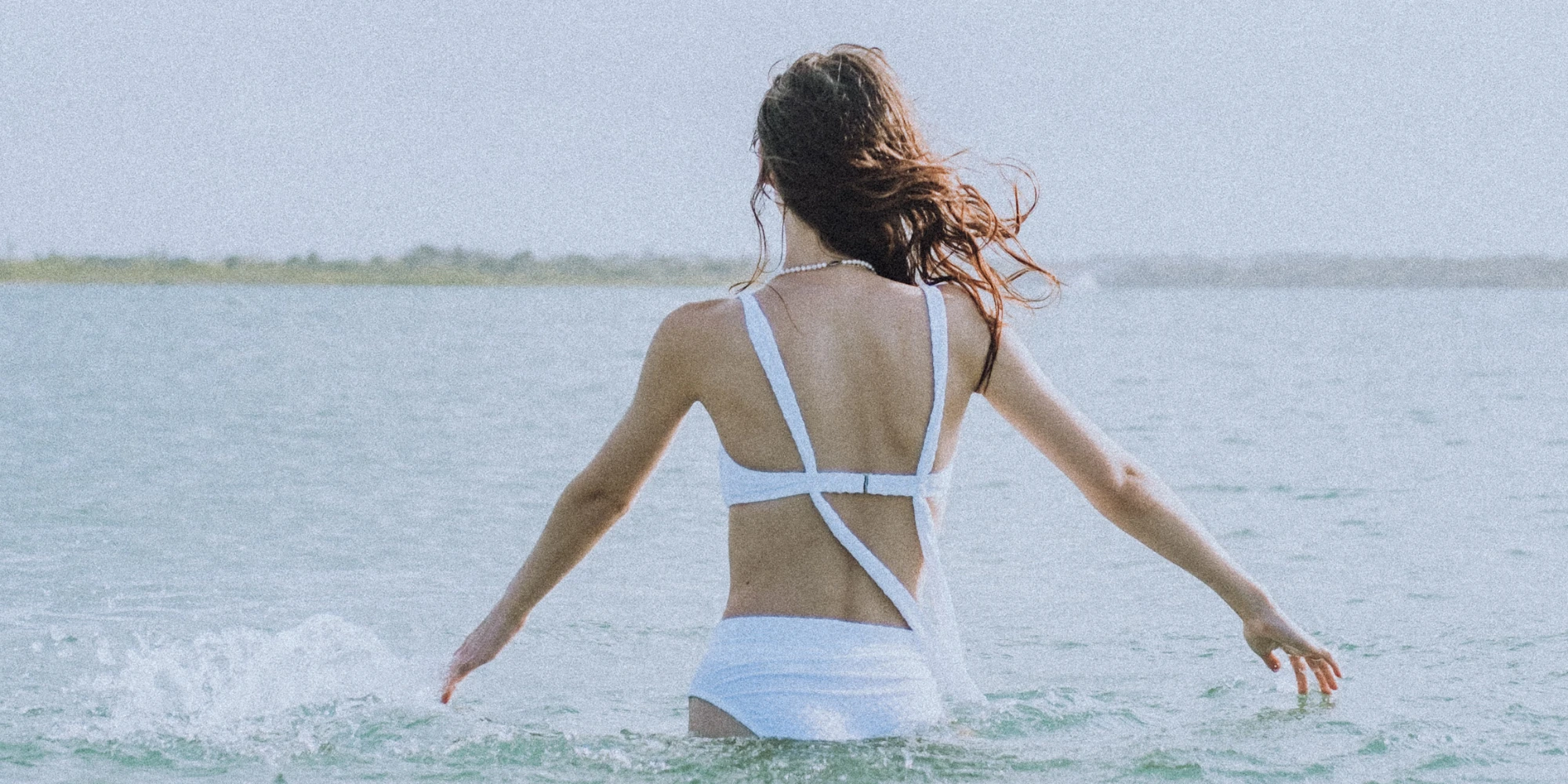Cold water swimming has increased in popularity in recent years and with good reason. There are numerous benefits to cold water swimming, some of which you don’t get from heated pools and baths. While it may seem uncomfortable and unappealing to some people before they try it, there are many reasons why it comes highly recommended.
What is cold water swimming?
Cold water swimming is exactly what it says – swimming in cold water. It is the act of swimming in a body of water, generally at temperatures below 15°C. If you wanted to try cold swimming yourself you could do it in an outdoor pool or lido, a local beach, or even in a local river. If you don’t have access to any of these, you can even jump in the shower and keep the temperature cold, run a cold bath, or fill up a paddling pool in your garden. You may not get some of the same benefits as wild swimming in cold water, but you’ll still get plenty of benefits just from taking a dip in the cold water.
How to get involved with cold water swimming
SAS – Surfers Against Sewage are running a campaign this October, called Dip A Day, where you can get involved and raise money for their various activities to help clean up the oceans and other bodies of water. Have a read of their FAQs and join their Facebook group for the challenge.
Benefits of cold water swimming
Cold water swimming can also be called cold water therapy, cold water immersion, or cold hydrotherapy, with plenty of research linking the activity with multiple benefits for both the body and mind. Many athletes use cold hydrotherapy as part of their training and recovery process and it has even been documented to have been used as far back in time as ancient Greece. Hippocrates documented his experience of using ice-cold water to help reduce pain. Mark Harper, part of a team from the University of Portsmouth researching the benefits of cold-water immersion, said that when you submerge your face in cold water, “messages are sent out through the parasympathetic nervous system that put your organs into ‘rest and digest’ mode, lowering heart rate and reducing inflammation. But also, at the same time, the chemicals, serotonin, and noradrenaline are released, and it’s believed that these turn on the pain-inhibiting pathways in the brain.”
Here are just some of the benefits of cold water swimming:
1. Mood booster
Cold water swimming has been known to improve your emotional state. Plunging your whole body in cold water releases a wave (pun intended) of endorphins, helping you feel calm and happy. This is your body’s natural reaction to the shock and stress caused by the contact with cold water. Recent studies have shown that cold water immersion can boost dopamine (another hormone associated with ‘happy’ feelings) by over 500%! Due to the release of both endorphins and dopamine, cold water swimming has been associated with a large reduction in stress. Cold water therapy can also have long-term mental health benefits as well as the short term rush of hormones. Studies have been done on patients suffering from depression who took part in weekly cold water swimming and it was found that their symptoms reduced so significantly that they were able to stop taking their normal medication.
2. Boosts immune system
Cold water swimming can boost your immune system, potentially making you more immune to some illnesses and infections. Although further study is required, there is mounting evidence to suggest that some respiratory infections can be up to 40% lower in winter swimmers. Regularly swimming or submersion in cold water can also increase levels of glutathione, which helps to regulate the antioxidant process within your body, as well as increasing white blood cell.
3. Improves cardiovascular health & full body workout
Cold water swimming gives your entire body a workout. The exposure to the cold water narrows your blood vessels at the surface of the skin and in your extremities to keep your core warmer, which means your heart and lungs work harder to push oxygenated blood to your muscles. Swimming provides a great workout as you need to move your arms, legs, hands, and feet just to stay afloat, add your body’s natural reaction to and defence against the colder temperature, and it increases this workout. Because you are working harder to both stay warm and afloat, you’re burning more calories!
4. Provides pain relief
Cold water immersion has been shown to help relieve and reduce pain and inflammation. Just think – one of the first things you do to relieve swelling is place an ice pack on the affected area, right? Cold water swimming can reduce pain and inflammation for up to 24 hours!
5. Improves libido
Yes, you read that right. Cold water swimming helps to increase your libido as it boosts the production of both oestrogen and testosterone. Some of the knock-on effects of an improved libido are increased confidence, improved mood, and a higher self-esteem. Not the mention the obvious physical advantages 😉
6. Ecotherapy – benefits of nature
Cold swimming can provide numerous benefits associated with being out in nature as well, if you choose to go wild swimming in cold waters as opposed to cold water immersion in the bath or shower. The positive effects that being out in nature provides have been well documented over the years and getting out for a wild cold water swim in the ocean, lake, or river can enhance this.
Cold water swimming can provide many benefits to both your body and mind. If you join a local group or go out with friends or family, it can also give you the added benefit of a sense of community and shared experience too, which has been shown to provide its own benefits. As with any form of physical activity, there are certain things to remember in order to stay safe. But with cold water swimming, especially wild swimming, there are a few very important things to remember.


COLD WATER SWIMMING SAFETY
1. Cold water swimming kit
It is important to wear the right kit when cold water swimming – especially if you’re new to it. If you’re wild swimming in the colder months, the temperature of the water can get extremely cold. We would suggest wearing a swimming hat and a wetsuit too, at least until you’ve acclimatised to cold water immersion. Neoprene gloves and boots are also a good idea when it gets particularly cold, or you are inexperienced and would like extra protection. Some cold water swimmers often wear a woolly hat in the water, too!
2. Warm clothes at the ready, but warm up slowly
Get out of your wet clothes as soon as possible when you exit the water and wrap yourself up in a towel and insulated layers. Make sure you have a large towel and warm clothes ready to hand for when you get out of the cold water along with a warm drink. Do not jump straight into a hot shower as this can warm up your extremities quickly, flushing blood back into them at a fast rate and cooling your core down too soon, which can be dangerous.
3. Acclimatise yourself
Try and start early – October is the perfect time of the year to begin cold water swimming as it will allow you to get used to the cooling water temperatures as the cold season goes on. When you first get into the water, take it slow, allow your body to get used to it. Once you are in the water, keep swimming and moving – don’t stop – your body will soon get used to the cold temperature. Another trick for getting ready for a wild cold water swim is to take cold showers and baths in the lead-up to a swim outdoors. This will help your body get used to colder temperatures.
4. No diving
This isn’t just a rule reserved for swimming pools. Cold water exposure, unless you have been cold water swimming for a while and are used to it, can make you gasp for breath, which is not helpful when you’re under the water. It can also cause cold water shock, which can be very dangerous in deep, open water. Ease yourself in so that you are over the initial shock and gasping for breath before you’re in too deep.
5. Know your limits
As the temperature of the water gets colder and colder through the winter months, know when to say enough is enough. Even the most hardened and experienced cold water swimmers often only swim for minutes at a time when the water is at its coldest. As a general rule of thumb, it is recommended that you spend 1 minute in the water for each degree of water temperature. Of course, you also need to pay attention to your body – if you feel like it’s time to get out – get out!
6. Breathe
When you expose yourself to colder temperatures, you may begin to breathe faster and shallower. Try to slow your breathing down. Take a slow deep breath in, hold it for a second, then blow it out nice and slow, hold for a second, and then breath in again slowly, and repeat. This will not only help get your breathing under control but will also help you relax and calm down.
7. Be safe!
Finally, and most importantly – be safe! If you’re going cold swimming outdoors, make sure you have researched the area you are going swimming in and are aware of the potential risks and dangers. Make sure you have a clear entry and exit path in and out of the water, never lose sight of it, and ensure you can easily reach it. Be aware of any rip tides, fast flowing water on rivers, or any other water hazards that may be a danger to you. It is always a good idea to check for local wild swimming groups on social media as these can be a great source of information for safe swimming locations as well as advice, guidance, and company.
Check that the place you’re swimming in outdoors is safe to do so – Surfers Against Sewage have created a helpful app called the Safer Seas & Rivers Service that you can download from the App Store for Apple or the Google Play Store for Android devices. The Safer Seas & Rivers Service allows you to check real-time water quality and alerts users of any sewer overflow discharges occur or when water quality is affected by heavy rainfall or other pollution incidents. It also includes information about tide times, surf conditions, and even nearby facilities and lifeguard services. The app covers almost 400 beaches and is building the data for rivers and streams also.
We asked members of a cold water swimming group what they thought about cold water swimming and how it makes them feel. Here’s what they had to say:
“It ‘resets’ my mood and I love it! It’s the only time I feel like a kid and can have a real belly laugh. Incredible results!” “Amazing benefits. I am slowly dropping my medication since starting cold water swimming. I believe it has helped with peri menopause symptoms. I’ve even signed up for an ice swim in January in Slovenia and have become an open water swim coach.”
“I was in a bad mood yesterday through work, and as soon as I did my cold water dip my mood changed. It’s definitely an endorphin rush for me. I don’t suffer from depression or moodiness in general and pretty much a pint half full kind of person, but really notice the difference in how good it makes you feel. Was always sceptical about the cold water therapy stuff, but pretty convinced now.”
If you’re thinking of starting cold water swimming, getting in touch with a local cold water swimming group is a great way to safely introduce yourself to the activity, learn the do’s and don’ts, and find some great local spots to do it.

